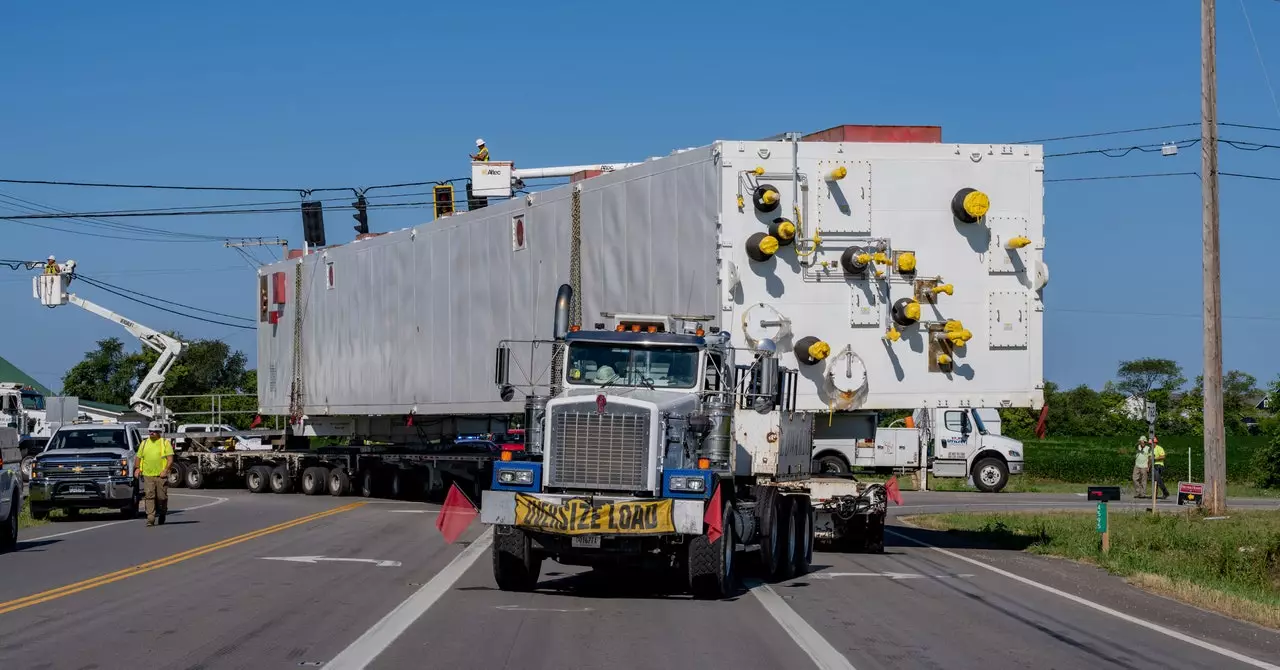In the realm of large-scale transportation, few challenges rival the movement of superloads—massive cargo items that weigh over 120,000 pounds. Recently highlighted in the grand logistical endeavor by Intel in Ohio, these superloads showcase both the complexity of modern engineering needs and the human stories intertwined with such massive operations. This article examines the intricate planning, disruptive impacts, and the community’s mixed reactions as these astounding transports make their way toward Intel’s future site for artificial intelligence chip manufacturing.
On a desolate stretch of highway, one particular superload stands as a testament to modern engineering: measuring a staggering 280 feet in length, 23 feet in height, and 20 feet in width, this hefty cargo often dubbed a “cold box” weighs nearly one million pounds. Unlike its name, the engineering marvel behind this box is anything but mundane. Constructed in Europe and transported via a long journey across rivers and waterways to a designated port, the cold box represents an air separation unit crucial for microchip production. Cleanroom conditions are paramount in manufacturing microchips, where even the tiniest contaminants can wreak havoc on silicon wafers used in technology. The cold box’s role within an air separation unit deepens the importance of such logistical feats in the tech-driven world.
Transporting something of this magnitude requires more than just a few trucks and a sturdy road. It calls for careful orchestration that spans a full week. Numerous stakeholders must collaborate, including hauling companies, utility providers, police departments, and local communities. Incredibly, even power lines and traffic lights must be temporarily relocated, illustrating the extensive planning that goes into ensuring these superloads can traverse their routes without impediment. This logistical undertaking highlights how the intersection of technology and human effort manifests in these behemoth transports—redefining what is achievable in industrial logistics.
While the sheer scale of the superloads may capture headlines, the human stories associated with these deliveries provide insight into the cultural fabric of the communities impacted by such endeavors. Local residents follow the progress of these loads with excitement, igniting a community spirit that blends curiosity with nostalgia. For many, observing such extraordinary events is a source of pride and a break from everyday life. Take Emily Stone, affectionately nicknamed “the Load Chaser,” who famously brings her camping chair to cheer on these massive transports. For her and facets of the local community, the arrival of superloads signifies more than economic progress; it carries with it a reflection on a quaint small-town America that now grapples with a shift toward high-tech industries.
The infusion of high-tech manufacturing into regions once heavily reliant on traditional industries brings about complex narratives. As towns like Portsmouth evolve, they carry the weight of histories filled with factories and mills, marking a time when uranium enrichment was the pride of the community. For residents like Emily, the juxtaposition of this historical legacy against the backdrop of cutting-edge technology presents an emotional dichotomy—intertwined with personal stories of loss and hope for economic revitalization. As superloads increasingly navigate the local landscape, they serve to remind us of the transformative journey that regions must undertake in the face of evolving technological demands.
As the logistics of transporting superloads fundamentally alters the Ohio landscape, it also unveils a metamorphosis in the industrial fabric of America. The balance between progress and communal sentiment is a dialogue that is essential to foster as regions adapt to new economic realities. With every superload event, we witness not just a unique logistical feat, but also the heartfelt stories and growing pains of communities transitioning into a tech-driven future. Whether supportive or critical, the conversations sparked by these colossal transports underscore the importance of engaging publics in discussions about technological progress and its impact on shared spaces and legacies.


Leave a Reply